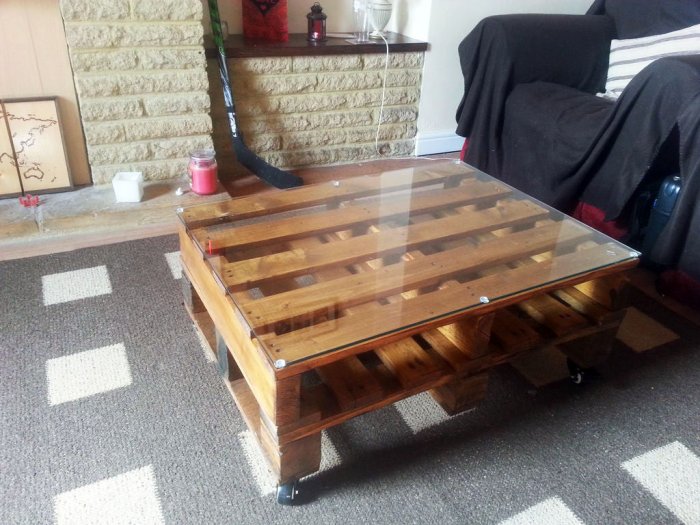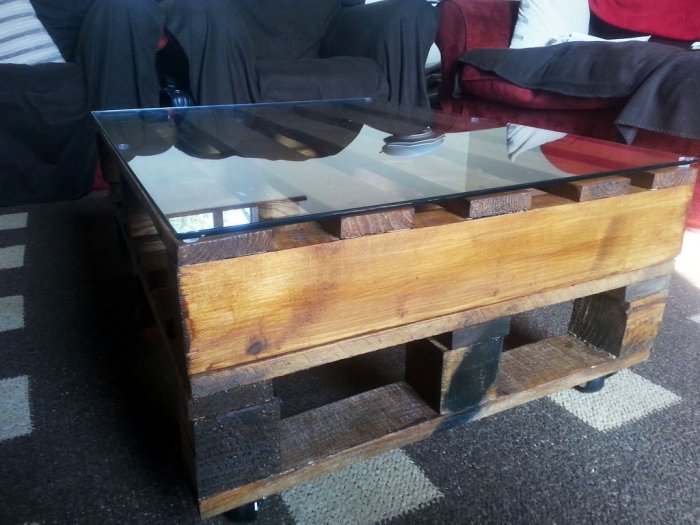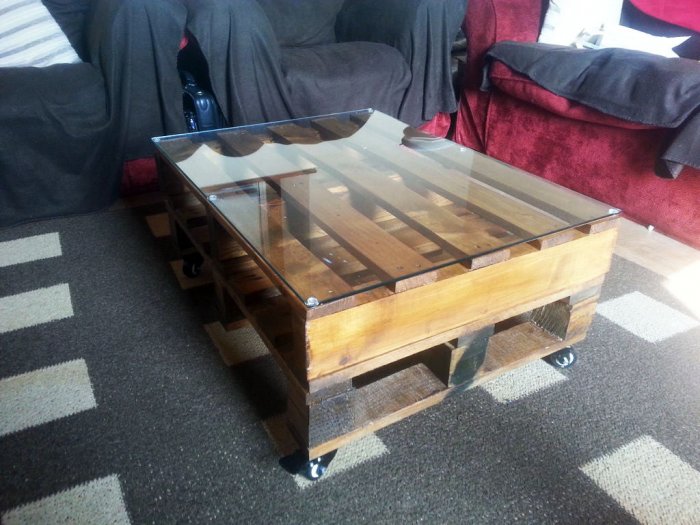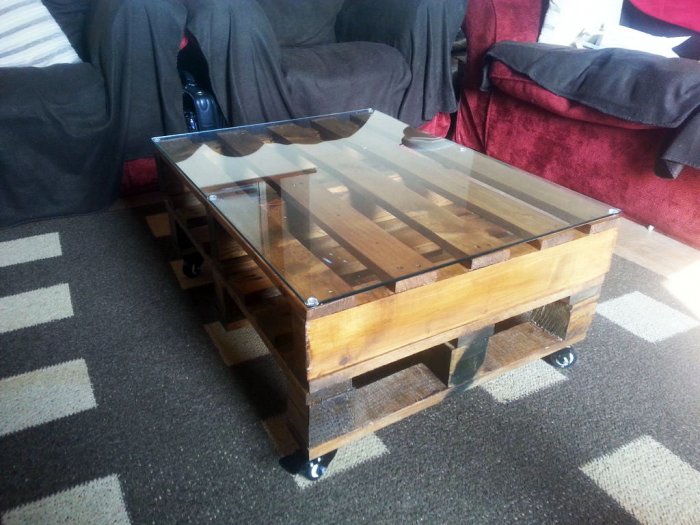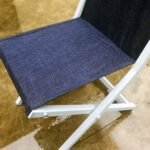This ordinary piece of furniture, made of unusual materials, can not only perform its direct functions but also become a real decoration of the interior of any room, especially those designed as a loft.
Its manufacture does not require extensive experience in working with wood, a lot of time, and significant costs. The table can be made from auxiliary materials, for example, pallets. If you approach the work creatively, you will get a unique product.
Will need
In addition to the two pallets that we decided to use as the basis for the coffee table, we need to prepare or purchase additionally the following materials:
- tempered glass with a thickness of at least 6 mm;
- furniture casters;
- rubber damping pads;
- screws are different;
- transparent varnish.
Since pallets are mainly used for transporting and storing various materials and products, a lot of work remains to be done to give them a marketable appearance. Therefore, we must have the following tools on hand: a grinder with grinding wheels; sandpaper; drill and set of drills; file and screwdriver; brush and varnish container; and wood hacksaw.
Coffee table manufacturing process
First, we determine the relative position of the pallets, since the final result depends on this. We place them so that the flatter surface is on top, and the elements of the pallet at the bottom ensure reliable installation of the rollers.
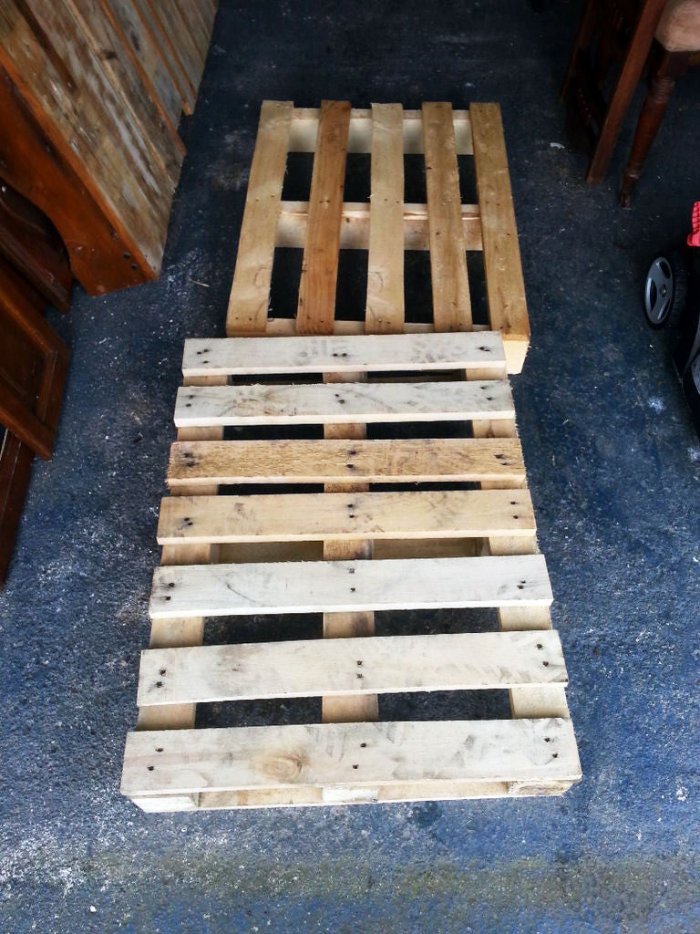
Before fastening the pallets, we check and strengthen weakly holding elements using nails or screws and check that the fastener heads do not protrude outward. If this happens, use a hammer and file.
Let’s start sanding the surfaces. Using a grinder and a grinding wheel, we remove any deposits, round off sharp edges, and smooth out various irregularities. Using rough sandpaper we touch up the areas left untreated after the grinder. Finally, use soft sandpaper to make the surfaces smooth, especially those that will be visible. Let’s start varnishing the pallets. First, cover all surfaces with one layer, regardless of their location. After letting the first layer dry, apply the second, and then the third. Moreover, to save money, we apply three layers only on the front surfaces, two on the side surfaces and one on the back surfaces.
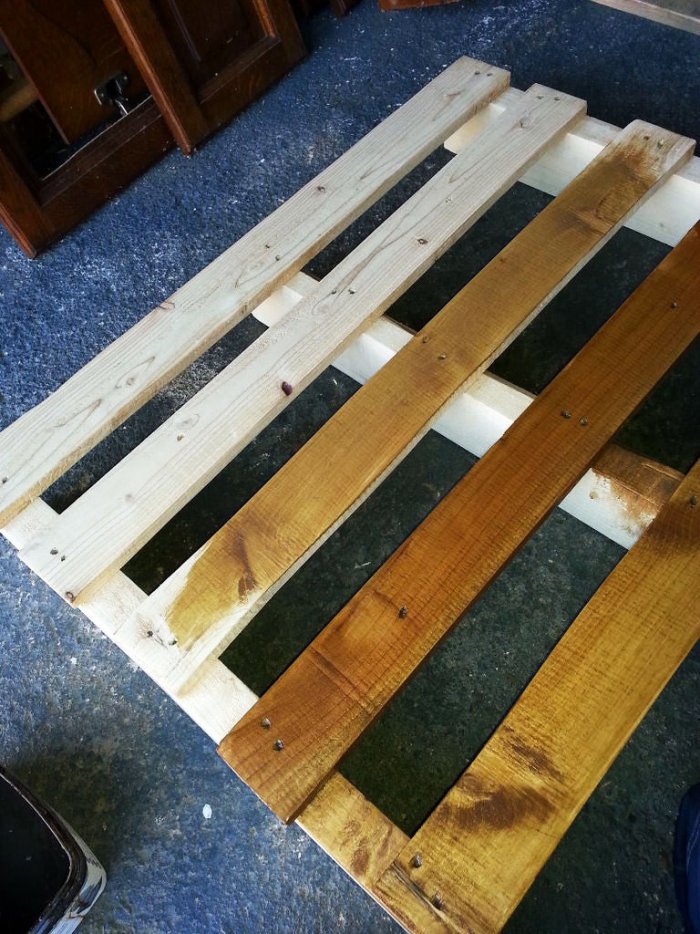
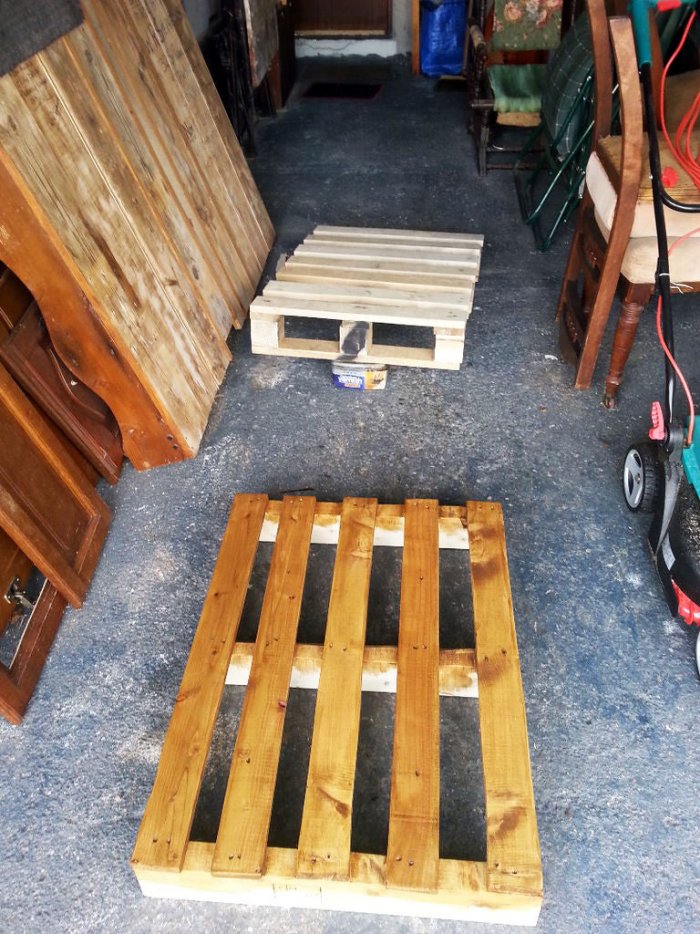
We fasten the pallets, turning them 180 degrees, using ten screws, four of which are screwed evenly along the edges and two in the middle. To prevent the wood from bursting, we first make holes for the screws with a drill whose diameter is less than the diameter of the screw rod.
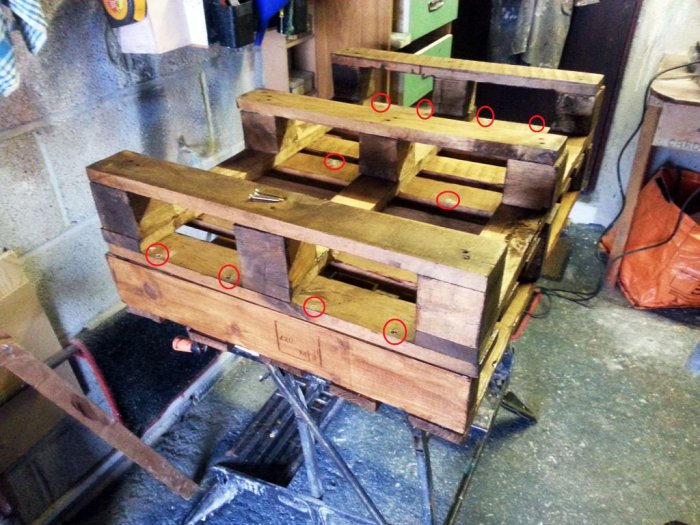
We install four rollers in the corners using screws with a large head. We place the rollers with brakes diagonally. So our table can be moved from place to place and fixed if necessary.
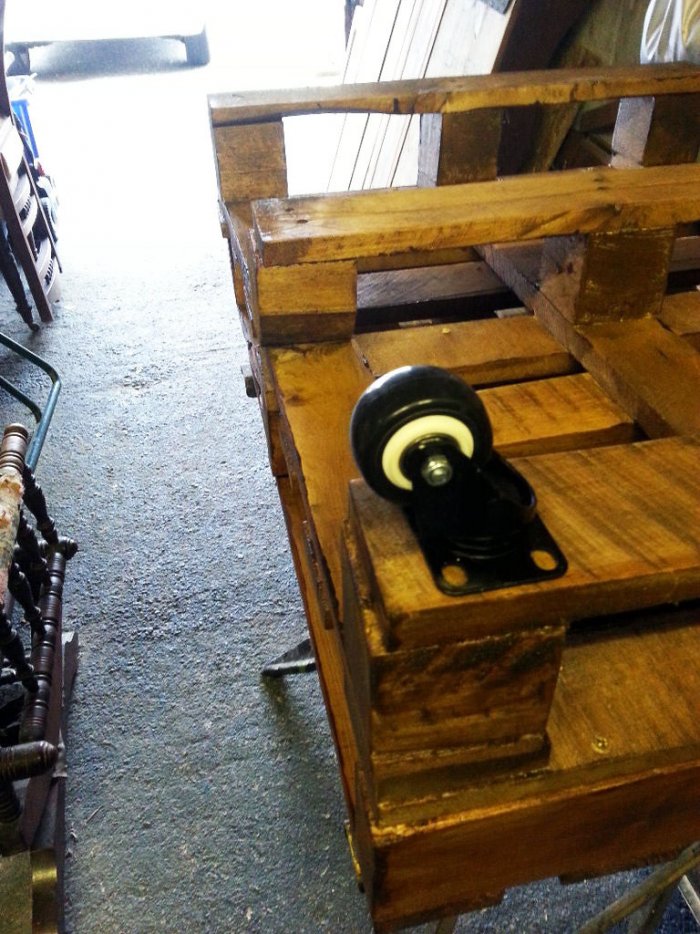
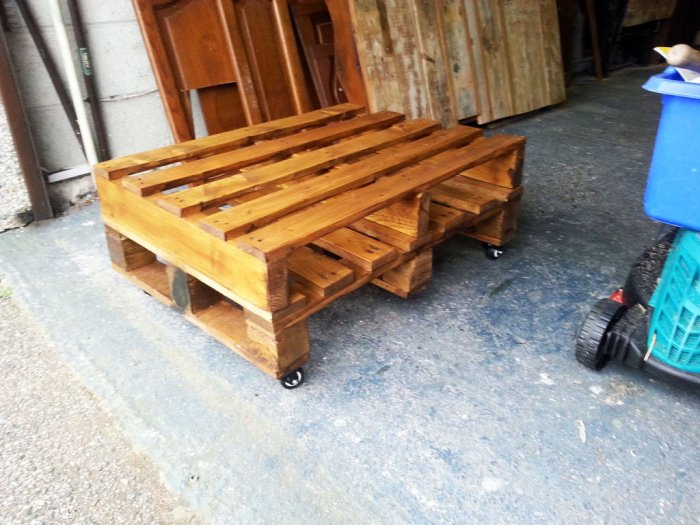
We order tempered glass with a thickness of at least 6 mm in such a size that it completely covers the plane of the top tray. To prevent the glass from moving from the base, we place rubber damping pads under the corners, which soften the impact when closing furniture doors.
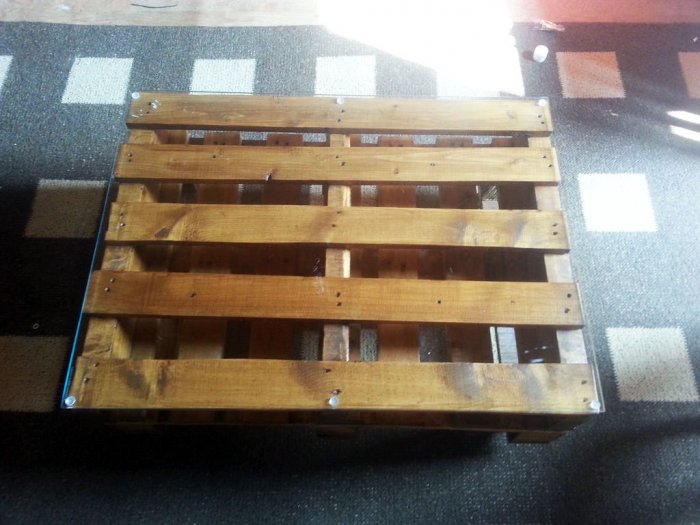
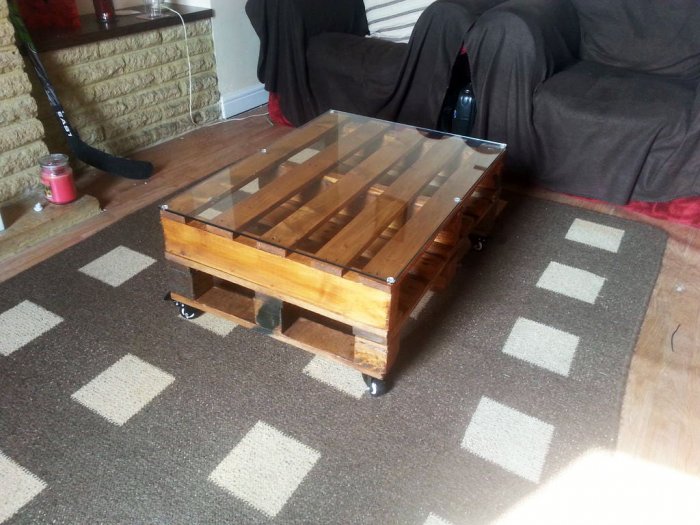
You can estimate how much such a table will cost: two old small pallets ~5$, tempered 6 mm glass 0.5 sq. m – 10$, four furniture casters – 15$. Total: 30$.
